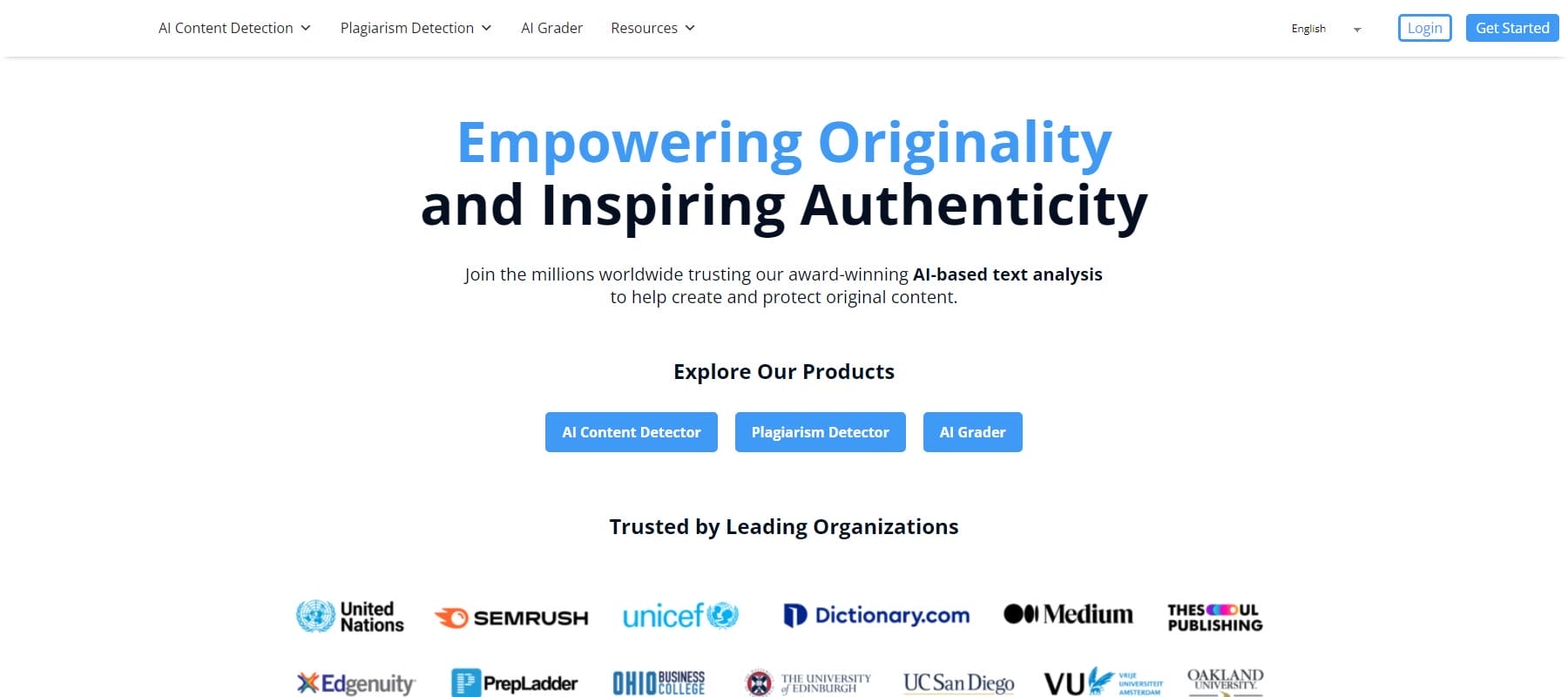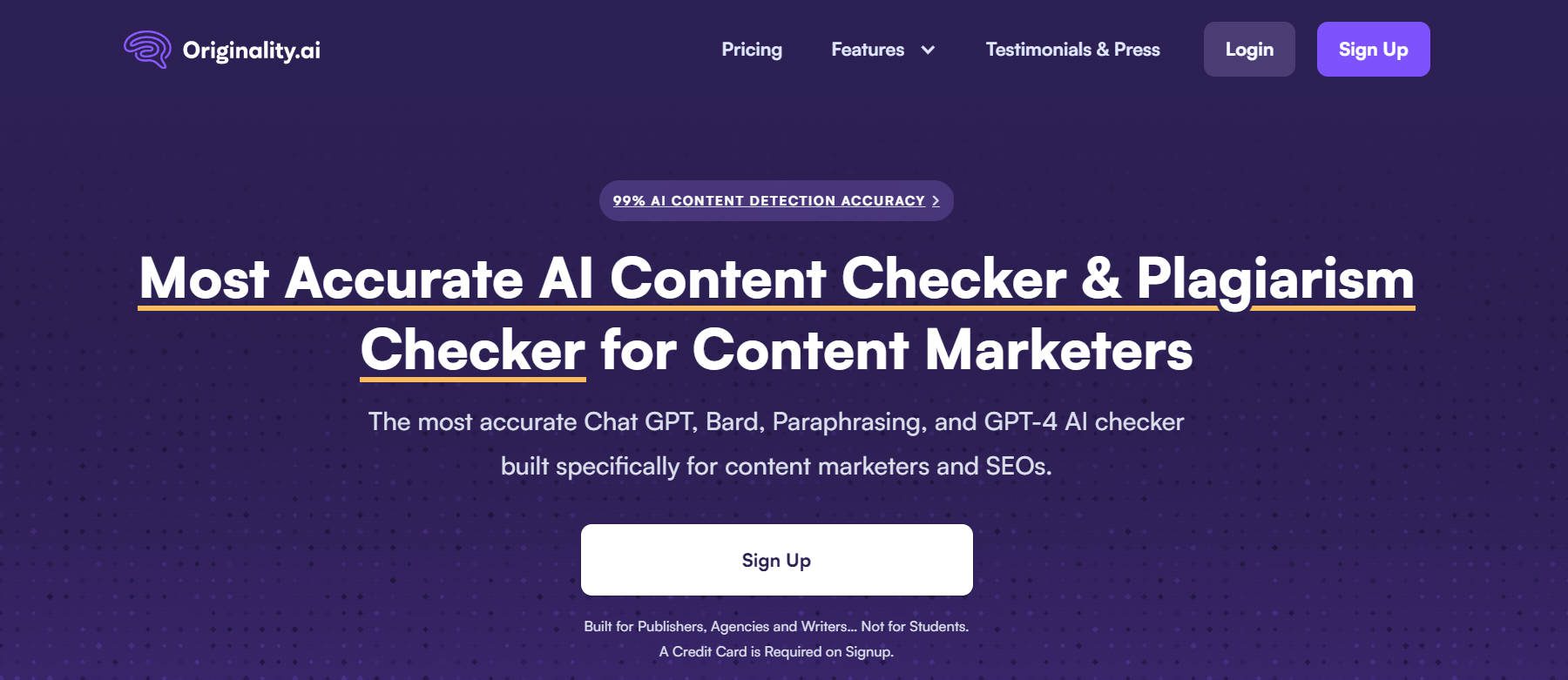AI Content Detection and Plagiarism: A Comprehensive Guide for Content Creators and SEO Professionals
In the ever-evolving landscape of digital content creation, AI content detection has emerged as a pivotal process. It employs advanced machine learning and natural language processing techniques to distinguish between human and AI-generated content. This distinction is critical, as AI-generated text often exhibits certain characteristics:
- Perplexity and Burstiness: These are the measures of predictability and variation in sentence structure and word choice. AI content tends to be more predictable and uniform, while human writing displays greater dynamism and variety.
- AI-ish Features: Common signs of AI-generated content include repetitive language, incorrect or outdated information, and a lack of depth and personality. This stems from the inherent limitations of AI models, which rely on existing data sets and lack the ability to engage in deep topic analysis or exhibit a personal touch.
How do AI content detectors work?
Plagiarism detection, a longstanding tool in academic and professional fields, has gained renewed importance in the era of AI. These tools scrutinize texts against extensive databases to identify matches or similarities. The rise of AI-generated content, which can paraphrase existing material, poses new challenges for plagiarism detection, necessitating more sophisticated approaches.
AI content detectors commonly utilize language models to evaluate input text by comparing it to the text generated by the models themselves. When the detector identifies similarities, it concludes that the content is AI-generated. These models primarily consider two key factors: perplexity and burstiness. Perplexity gauges the text's level of unpredictability or confusion to an average reader. Conversely, burstiness examines the sentence structure and the degree of variation in sentence length. By examining these aspects, AI content detectors can make assessments regarding the origin and characteristics of the text under analysis.
Strategies for Detecting Plagiarism and AI-Generated Content
1. Utilizing Detection Tools
Specialized AI content and plagiarism detection tools are invaluable for content marketers and SEO professionals. While not infallible, they provide a solid starting point for identifying potential issues in content. These tools vary in accuracy and database access, impacting their effectiveness.
2. Human Analysis
Beyond automated tools, human scrutiny remains crucial. Content creators should look for:
- Outdated or Incorrect Information: AI might not access the latest data, leading to inaccuracies.
- Superficial Responses: AI-generated text often lacks depth, failing to provide insightful or critical analysis.
- Repetitive Language: AI models may overuse certain words or phrases, reflecting their training limitations.
Best AI Content and Plagiarism Detection Tools
1. Zerogpt

ZeroGPT also has the ability to take in uploaded files for scanning. Furthermore, since the tool promises 98% accuracy, it has a good content-to-result ratio. I submitted a generic pasted text from GPT-4 and it was able to detect half of the text as AI. Since some of the inputs were human, it’s an overall good result.
2. Copyleaks

Recognized for its high accuracy, Copyleaks offers comprehensive features for detecting AI content and plagiarism, catering to various user needs including educational institutions and businesses.
3. Originality.ai" url="complete">Originality.ai

Targeted at content and SEO professionals, this tool prides itself on high accuracy and the ability to detect paraphrased plagiarism. It is suitable for extensive content analysis, offering features like full site scans.
4.Winston AI

Winston AI is a top-notch AI detector for written content with a focus on distinguishing between human-written and AI-generated text. Based on their internal testing, it achieves an impressive 99% accuracy for popular AI models like ChatGPT, GPT-4, and Bard. Winston AI offers a user-friendly interface, allowing users to save reports for future reference. Key features include advanced AI detection, effective plagiarism detection, readability analysis, and team plans for collaboration. The tool categorizes sections of text into likely AI-generated, possibly AI-generated, and unlikely AI-generated, providing color-coded results. It also identifies instances of plagiarism and specifies the plagiarized text and its source. Overall, Winston AI stands out for its high-quality tools dedicated to detecting AI-generated content.
5.GPTZero

GPTZero is a tool specifically designed with simplicity in mind, primarily catering to educators and educational institutions. It offers academically oriented plagiarism detection tools and provides a straightforward solution for identifying AI-generated content. While its stripped-down user interface may be suitable for some users, others may find it too simplistic. However, GPTZero stands out for its integrations with learning management systems (LMSs) and Microsoft Word, allowing users to conveniently scan for AI-generated content within their documents without the need for manual copying and pasting. This feature proves to be a significant time-saver in educational contexts.
6.Copyleaks

Copyleaks provides an easy-to-use AI content detection service on their website. Their free service utilizes AI-based contextual analysis to screen text. Additionally, they offer a Chrome Extension that detects AI-generated content while browsing web pages. This tool specifically focuses on identifying AI-generated academic content. Its purpose extends beyond simply catching AI-generated content to comprehending the various forms of AI-driven content that can impact the integrity of submitted work.
Frequently Asked Questions (FAQs)
1.Does Google penalize AI content?
Through the implementation of the Helpful Content Update, Google reiterates its stance against AI-generated content and expresses its commitment to curbing the prevalence of low-quality text primarily tailored for search engine optimization rather than user value. However, there exists an opportunity to leverage AI-generated content effectively without incurring penalties from both Google and users. The key lies in the utilization of data. As Kevin Indig highlights, the crucial factor that distinguishes content creation lies in the inputs or data that companies employ. This is where the significance of structured data emerges as a vital solution. By incorporating structured data, organizations can enhance the quality and relevance of AI-generated content, aligning it with user intent and delivering valuable experiences while adhering to Google's guidelines.
2.How accurate are AI content detectors?
AI content detectors exhibit varying levels of accuracy, with Winston AI reportedly achieving a remarkable accuracy rate of 99%, while Originality.ai follows closely behind at 95.93%. The overall performance of these detectors has shown significant improvement, aligning with the advancements observed in language models (LLMs). However, it is crucial to acknowledge that LLMs are also rapidly advancing, posing ongoing challenges for AI detection tools. To address this, continuous efforts in training, rigorous testing, and innovative approaches are imperative to ensure the effectiveness and reliability of AI detection tools.
Conclusion
As AI writing tools become more prevalent, the need for rigorous AI content and plagiarism detection grows. Content marketers and SEO professionals must adapt to these technological advancements, employing a combination of sophisticated tools and human expertise to ensure the authenticity, originality, and quality of their content. This vigilance is key to maintaining high standards in digital content creation and ensuring a competitive edge in the dynamic world of SEO.




